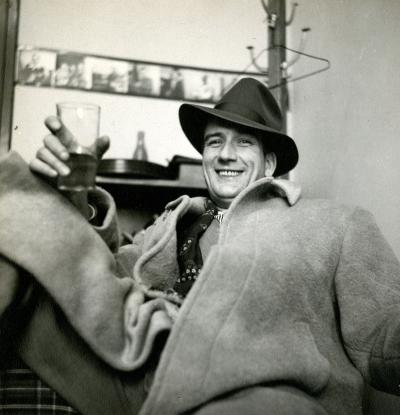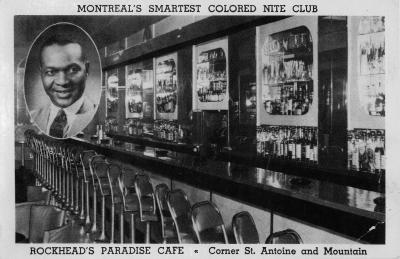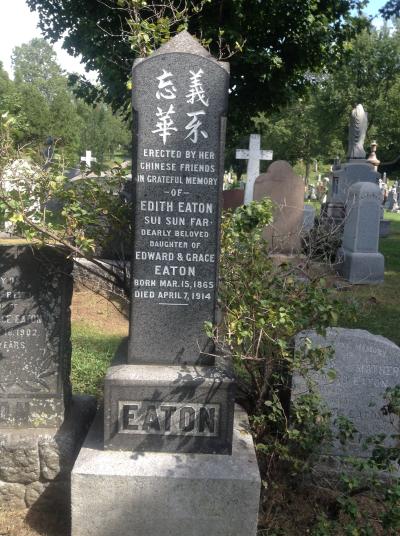Three waves of immigration have shaped Montréal’s Latin American community. After settling in the city, Latin Americans have made Montréal their own by creating spaces where they can express and engage with their cultures.
Latino-Américains - tableau
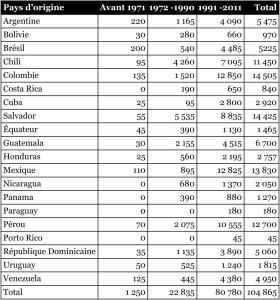
“Latin American” is a sociodemographic category used in the social sciences to designate people who come from or have ancestors from one of twenty countries in the Americas (including Brazil). According to consular archives, there were residents from Latin America living in Montréal in the 1930s, but it was not until the late 1950s that Latin Americans truly began settling in the city.
For the period 1946 and 1955, Canadian census data records 1,893 immigrants of Latin American origin. Statistical data and specialist studies do not tell us where these newcomers lived, but historically immigrants to Canada tended to settle mainly in Toronto and Montréal. The trajectory taken by Latin American immigrants has varied depending on when they arrived, why they chose to emigrate, and the political and economic contexts in their countries of origin. Examining these three aspects helps us understand how the three major waves of immigration have influenced the makeup of the Latin American community in Montréal.
Waves of immigration
The first wave of immigration began in the late 1950s and lasted until 1972. It brought in mostly students, independent immigrants, and workers from countries such as Chile, Argentina, Colombia, and Peru, under a special government program designed to recruit skilled labour.
Chiliens - famille Ravello
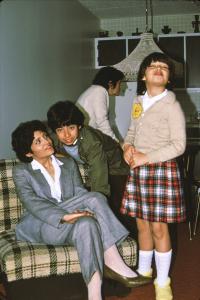
The third wave lasted from 1991 to October 2011, when the government of Canada repealed the “source country class” from the Immigrant and Refugee Protection Regulations. This refugee class applied to people living in countries affected by civil war and had allowed many Colombians, Guatemalans, and Salvadorans to enter Canada, because of high levels of civil unrest in their countries. A range of reasons also brought Latin Americans from other countries to Montréal during this period, including the cyclical economic crises affecting their countries, a broader movement of labour from south to north, and family reunification.
To this day, there are many reasons Latin Americans choose to come to Montréal to make a better life for themselves and their families. Chief among them is the chance of improved job prospects, even in the informal economy, and improved social mobility. The fact that more Latin Americans settle in Montréal than anywhere else in Québec also helps the process of integrating into the community. Some immigrants settle first in other countries and later choose Canada as a place to make their home and obtain permanent residency or citizenship. In a social process known as “chain migration,” immigrants come to Montréal to join an already-established community with which they have ties.
Making homes, building communities
Latino-Américains - commerces

The vast majority of Quebecers of Latin American origin live in Greater Montréal. And nearly all of them—93.8%—live right in the city. Latin American communities are concentrated primarily in the boroughs of Villeray–Saint-Michel–Parc-Extension (15.3%), Côte-des-Neiges–Notre-Dame-de-Grâce (10.5%), and Rosemont–La Petite-Patrie (8.2%).
There is no single pattern for how Latin Americans integrate into life in Montréal. In some cases, individuals and households remain “enclosed” within an ethnic community highly attached to its roots. These immigrants often use their native language to communicate and work, and they have minimal contact with life outside their community. In other cases, individuals and households move outside of their ethnic circles and build new lives with very little connection to their country of origin or their compatriots who have settled here. The circumstances behind immigration—why and when immigrants left their countries during the three historical periods discussed above—strongly impact the shape their integration will take.
Latino-Américains - Week-ends du monde
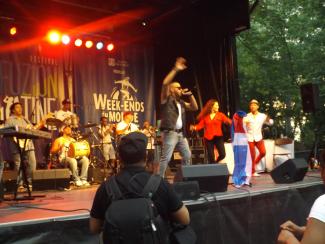
CHARBONNEAU, D. L’immigration argentine et péruvienne à Montréal : ressemblances et divergences, de 1960 à nos jours, Mémoire (M.A.), Université du Québec à Montréal, 2011.
VILLE DE MONTRÉAL. CONSEIL INTERCULTUREL DE MONTRÉAL (CiM). Le Plan de développement de Montréal et les relations interculturelles, [En ligne], 2013.
http://ville.montreal.qc.ca/pls/portal/docs/page/conseil_interc_fr/media...
DEL POZO, José. Les Chiliens au Québec. Immigrants et réfugiés de 1955 à nos jours, Montréal, Boréal, 2009, 409 p.
HUMANEZ, E. L’Immigration colombienne au Québec depuis 1950 : regard historique sur ses causes, Mémoire (M.A.), Université du Québec à Montréal, 2012.
GOUVERNEMENT DU QUÉBEC. MINISTÈRE DE L’IMMIGRATION ET DES COMMUNAUTÉS CULTURELLES. DIRECTION DE LA RECHERCHE ET DE L’ANALYSE PROSPECTIVE DU QUÉBEC. Portrait statistique de la population d’origine ethnique chilienne recensée au Québec en 2011, [En ligne], 2014.
http://www.quebecinterculturel.gouv.qc.ca/publications/fr/diversite-ethn...
BAnQ COLLECTIONS. « Les Latino-Américains – Immigrants et réfugiés au Québec, depuis les années 1960 jusqu’à nos jours », [En ligne], Histoires d’immigrations, 2012.
http://www.banq.qc.ca/collections/collection_numerique/series/histoires_...

